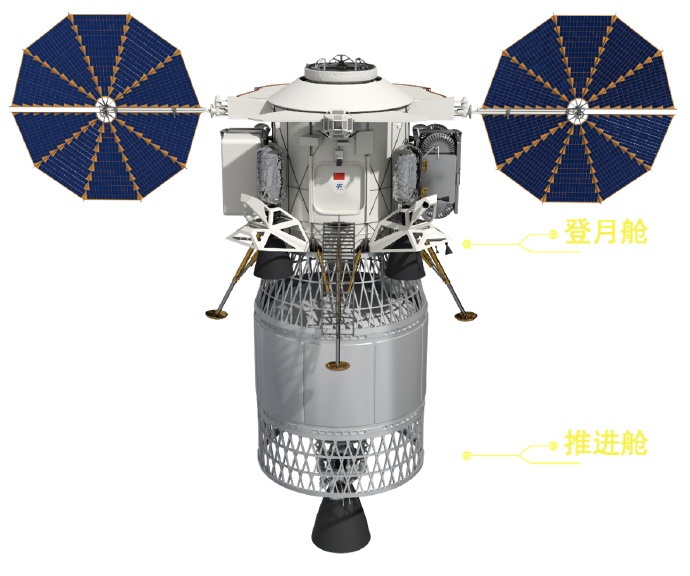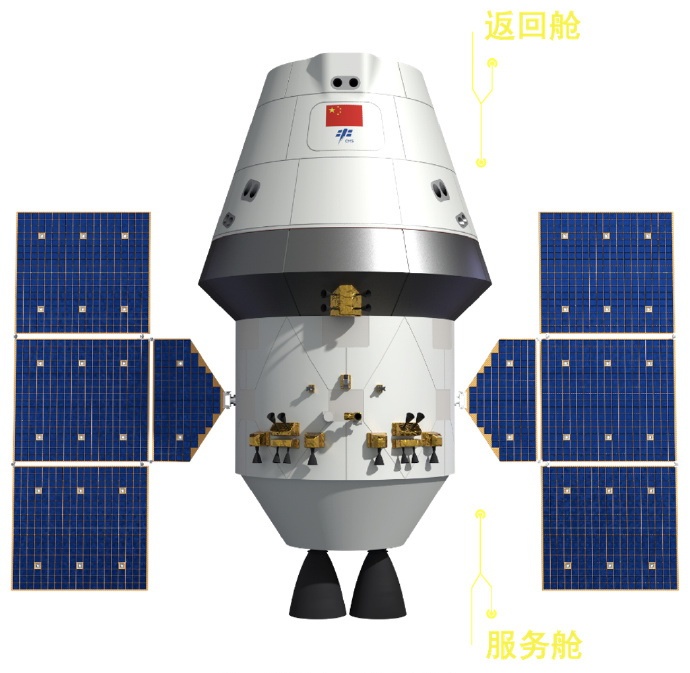Last May, as part of the nation’s growing presence in space, the China National Space Agency (CNSA) announced that it had established a Human Lunar Space Program that would send crewed missions to the Moon and culminate in the creation of a lunar base. This came shortly after China and Russia announced that they would be collaborating on future lunar missions, which included the creation of a base around the southern polar region. In June 2022, they announced that this base would be named the International Lunar Research Station (ILRS) and released a guide explaining how international partners could join.
On Thursday, August 31st, the China Manned Space Agency (CMSA) released artists’ renderings of their next-generation spacecraft and lunar lander. The spacecraft will consist of two sections, a reentry capsule, and a service section, while the lunar lander will include a landing section and a propulsion section. According to a statement released by the Agency, these vehicles will deliver crews to Low Earth Orbit (LEO) and allow China to send crewed missions to the lunar surface. The release of these images confirms what has been suspected for some time: that China fully intends to land taikonauts on the Moon before 2030.
According to the CMSA, the spacecraft will transport three astronauts to lunar orbit for a Moon-landing mission or up to seven crew members to China’s Tiangong space station in orbit. The lunar lander will weigh about 26 metric tons (28.66 US tons) and be capable of transporting two astronauts and a 200 kg (~440 lbs) rover to the lunar surface. This four-wheeled rover will have a suite of scientific instruments designed to survey the lunar environment, scout out resources, and identify potential sites for a future base.
 Artist’s renderings of the country’s next-generation lunar landing module. Credit: chinadaily.com.cn
Artist’s renderings of the country’s next-generation lunar landing module. Credit: chinadaily.com.cn
According to the official statement shared by China Daily, the new system “will feature reliability, reusability and modular designs that suit both near-Earth flights and lunar landing tasks.” A visual inspection confirms that the spacecraft and lander are identical to designs featured in the mosaic on the wall of the Office of Crewed Lunar Program, which was revealed by China ‘N Asia Spaceflight via Twitter in May 2022. This same tweet chain also revealed photos that confirmed the creation of the OCLP at the China Association for Science and Technology (CAST).
These elements are part of a roadmap drafted by Chinese scientists and mission planners for sending China’s first crewed missions to the Moon. Based on previous statements, this roadmap includes the development of the three-stage Long March 10 super-heavy launch vehicle capable of sending payloads of 70,000 kg (150,000 lbs) to LEO and 27,000 kg (60,000 lbs) to the Moon. Two Long March 10 rockets will launch the next-generation spacecraft and landing module, which will then rendezvous in lunar orbit. Two taikonauts will transfer to the landing module and then make a powered landing on the surface.
These taikonauts will then drive across the surface in the rover, carrying out various scientific tasks and collecting samples of lunar regolith. Upon the completion of these tasks, they will return to the landing module and return to their spaceship in lunar orbit. Another crew transfer will occur, followed by all three taikonauts will undock with the landing module and return to Earth. This mission profile is similar to NASA’s plan for the Artemis III mission, consisting of the Orion spacecraft and three astronauts launching atop the Space Launch System (SLS) to rendezvous with the Starship HLS in lunar orbit.
A crew of two will then transfer to the Human Landing System, descend to the surface, conduct science operations, and return to orbit to board the Orion and come home. Both of these plans differ vastly from the Apollo missions, where a single Saturn V rocket would launch the Apollo spacecraft containing all of the necessary mission elements. This consisted of a Command Module (CM) and Service Module (SM) – which would merge in lunar orbit to form the Command Service Module (CSM) – and a Lunar Module consisting of a descent and ascent module.
 Artist’s renderings of China’s next-generation crew spacecraft. Crew: chinadaily.com.cn
Artist’s renderings of China’s next-generation crew spacecraft. Crew: chinadaily.com.cn
This crewed mission will be a major step towards the creation of the ILRS and will be the culmination of China’s robotic lunar exploration program (aka. Chang’e program). China has carried out five robotic missions to date, the latest (Chang’e-5) obtaining samples from the southern polar region. The next mission, Chang’e-6, will consist of an orbiter and lander that will launch in 2024 and conduct a sample return from the far side of the Moon. If successful, this mission will be the first to return samples from the Moon’s far side.
Further Reading: China Daily

